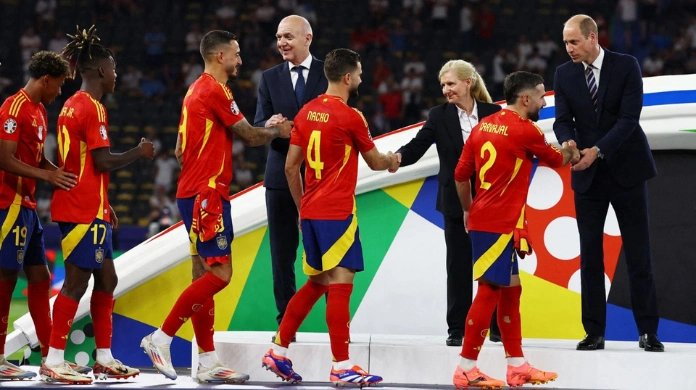As the 2025 FIFA Club World Cup unfolds across the United States, a searing controversy has overshadowed the tournament’s expanded spectacle: the relentless, hazardous heat. While the world’s top clubs battle for glory, players and fans alike are being forced to endure dangerous midday conditions—not for sporting merit, but to satisfy the demands of European television schedules and maximize commercial revenue.
Chasing European Prime Time—At What Cost?
FIFA’s decision to schedule marquee matches during local midday hours is a calculated move to ensure prime-time viewing for European audiences. This strategy, however, comes at a steep price for those actually on the ground. In cities like Los Angeles and Miami, temperatures during these matches have soared to 32°C (90°F) and above, with humidity levels compounding the risk. The result? Players and fans are left to contend with stifling, even life-threatening, conditions.
Atletico Madrid’s Marcos Llorente, after a noon kickoff against PSG at the Rose Bowl, didn’t mince words:
“It’s impossible. The heat is terrible. My toes and nails hurt. I couldn’t stop or start properly.”
His teammate Antoine Griezmann echoed the sentiment:
“We expected to play like we did at the Parc des Princes in November, but the heat made it much harder.”
Even PSG coach Luis Enrique, whose team triumphed 4-0, was candid about the scheduling’s true purpose:
“The match was clearly affected by the temperature. It’s a good time for Europe to watch, but the teams suffer.”
The Science of Suffering: Heat and Human Limits
Extreme heat is not just uncomfortable—it’s dangerous. According to FIFPRO, the global players’ union, prolonged exposure to high temperatures and humidity can cause heat cramps, exhaustion, and even life-threatening heatstroke. The human body’s core temperature, which ideally stays between 36.1°C and 37.8°C, can quickly spiral out of control in such conditions.
FIFA’s own guidelines mandate cooling breaks only when the Wet Bulb Globe Temperature (WBGT) exceeds 32°C (89.6°F), but FIFPRO insists these measures are insufficient. The union argues that matches should be postponed or rescheduled when WBGT readings surpass this threshold, not merely paused for a brief water break.
Fans in the Firing Line
It’s not just the athletes who are at risk. Packed stadiums, limited shaded areas, and restricted water access have turned the stands into ovens. Fans—especially children, seniors, and those with health conditions—face heightened risks of dehydration, heat exhaustion, and even heatstroke. During Inter Miami’s opening match at Hard Rock Stadium, the 8:00 p.m. kickoff still saw temperatures at 28°C (82°F) with 76% humidity, leaving both players and supporters visibly distressed.
Medical experts warn that a mere 1-3% loss in body weight from dehydration can impair performance and require medical intervention. The advice is clear: hydrate early, dress smart, and seek shade whenever possible. But for many, these precautions are not enough to counteract the risks imposed by FIFA’s scheduling.
The Commercial Calculation
Why, then, does FIFA persist with these hazardous kick-off times? The answer is simple: commercial revenue. European broadcasters pay premium fees for matches aired in their evening slots, ensuring maximum viewership and advertising profits. The needs of players and fans in the host country are secondary to the global TV audience.
Luis Enrique’s frustration encapsulates the issue:
“It’s a good time for Europe to watch, but the teams suffer.”
The expanded 32-team format, designed to boost global engagement and revenue, has only exacerbated the problem. More teams mean more matches, further compressing the schedule and increasing the likelihood of midday games in sweltering conditions.
Player Advocacy and Union Outcry
The backlash from players, coaches, and unions has been swift and vocal. FIFPRO and the English Professional Footballers’ Association (PFA) have launched legal action, arguing that FIFA’s calendar expansion is unsustainable and endangers player welfare. Their position is unequivocal:
“FIFA’s guidelines do not do enough to protect the health and performance of players. We recommend that if there is a WBGT of more than 32°C, training and matches should be postponed or cancelled.”
The union’s advocacy is grounded in science and basic human rights. No sporting event, however lucrative, should compromise the health and safety of its participants.
Solutions Ignored: What Could FIFA Do?
Experts in sports medicine have outlined clear, evidence-based strategies to mitigate heat risk:
- Shorten and modify warm-up routines to reduce early heat stress
- Implement tactical changes to account for heat-related fatigue
- Use cold water immersion and ice towels during halftime
- Ensure adequate hydration and maximize the effectiveness of cooling breaks
Yet, these measures are only stopgaps. The most effective solution—rescheduling matches to cooler hours—remains off the table as long as commercial priorities outweigh health concerns.
The Ethical Reckoning
The 2025 Club World Cup has become a litmus test for FIFA’s priorities. Will the governing body continue to prioritize profit and TV ratings over the well-being of players and fans? Or will it finally heed the calls for reform from unions, medical experts, and the football community?
As the tournament progresses, the world is watching—not just the matches, but the decisions made off the pitch. The message from those who matter most—the players, coaches, and fans—is clear: football should never come at the cost of human health.
Time for a Player-First Approach
The evidence is overwhelming. FIFA’s scheduling, designed to maximize European TV audiences and commercial revenue, is exposing players and fans to unacceptable risks. The voices from the field—Marcos Llorente, Antoine Griezmann, Luis Enrique—are not just complaints; they are warnings.
For the integrity of the game and the safety of all involved, it’s time for FIFA to put people before profits. The world’s greatest sport deserves nothing less.













